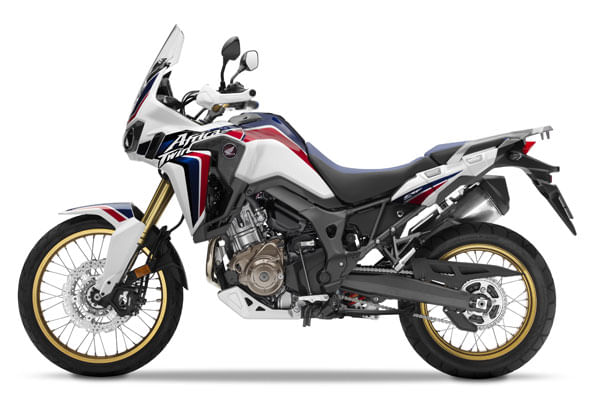Honda's Africa Twin is somewhat of a big deal. The manufacturer has jumped into the budding adventure touring segment in India with a highly capable motorcycle which also has a lot of history behind its name. The best part is that Honda has stuck to the promise it made at the 2016 Auto Expo, and is assembling this motorcycle in India. This has kept its price at a reasonable Rs 13.06 lakh (ex-showroom Delhi), at par with its Triumph and Ducati competitors; the Africa Twin, however, is the only one here to get a high-tech dual-clutch (DCT) gearbox. In fact, Honda is getting 50 Africa Twins in the first batch to India and the lot of them have already been sold out.
We just had our first spin on the new Africa Twin and came away fairly impressed (read our first ride review here). Let's take a quick look at some noteworthy aspects of the bike.
India will only get the DCT model (for now)
Experienced riders might cringe at this, but Honda is initially only planning to get the six-speed dual-clutch transmission (DCT) model to India. For the Africa Twin, Honda has packaged the gearbox in an extremely compact crankcase. It allows for manual shifts, through triggers on the left handlebar (or an optional foot pedal), and also a couple of auto modes – 'D', designed for economy and comfort, and 'S' for sporty riding, which itself has three different shifting profiles to choose from. When manoeuvring at slow speeds, this transmission can slip the clutch to avoid sudden burst of torque to be sent to the rear wheel if the throttle is opened sharply. However, for off-road riding, a ‘G’ button can be engaged in any riding mode and that makes the rear wheel more directly responsive to throttle inputs. The gearbox can understands how the bike is travelling on an incline and can delay upshifts when climbing and quicken downshifts while descending.

The 999.11cc parallel-twin motor is very compact
An adventure bike needs high ground clearance and an important step in achieving this is to have a compact motor. Honda chose a parallel-twin engine for the Africa Twin as a V-twin would’ve been too long or too tall for the job. To further package it tightly, it gets a vertically split crankcase with a semi-dry sump and in-tank lower-crankcase oil storage, water pump housed within the clutch casing and even a thermostat integrated into the cylinder head. Speaking of the head, this motor features Honda’s SOHC Unicam system to drive the four valves per cylinder, which additionally contributes to its compactness, mass centralisation and low centre of gravity. With a 270-degree phased crankshaft and twin spark plugs per cylinder, power delivery is similar to that of a V-twin with a straight power curve and a meaty torque curve that delivers healthy doses of bottom-end pull. This compact motor design has helped Honda engineers package the Africa Twin in such a manner that it offers a fairly short seat height (820-840mm) while retaining a monstrous 250mm ground clearance.










.jpg?w=728&q=75)
















